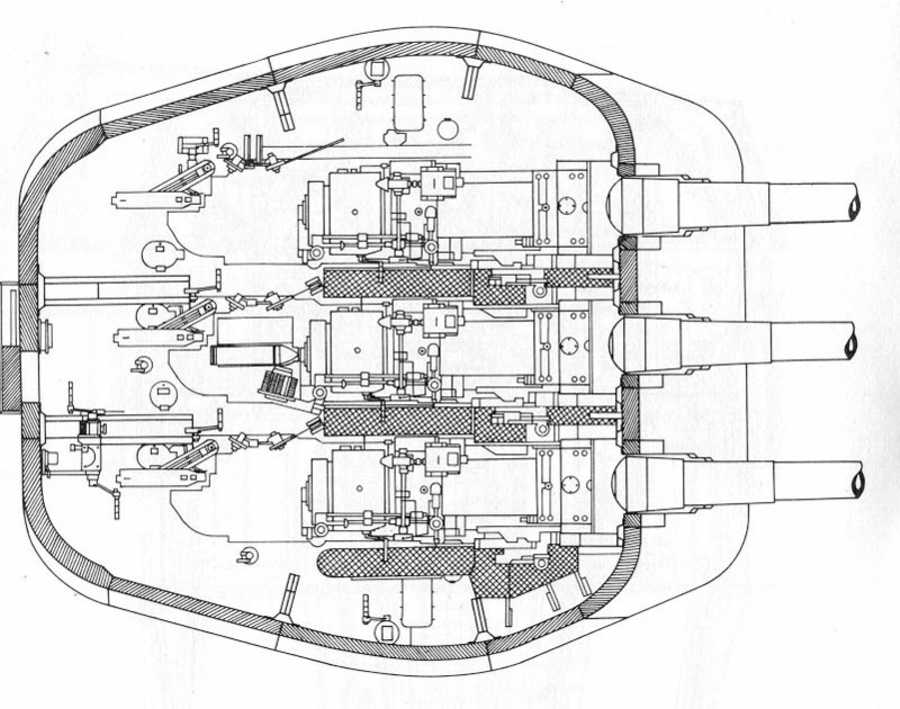11/10/2023 - In my original Venezuela listings, the Trujillo uses parts from the second Nikolai I class battleship (then converted to a carrier) to have a new ship built for them in the US. While this sounds like a good Idea, I do wonder where I am getting the money from to do this. While Venezuela may acquire the neighbouring countries and their treasuries, none of those countries, is super rich either, to enable Venezuela to start buying battleships. The whole idea of sending Wrangel's fleet to Venezuela was to have them start producing their own ships.
The conversion of the Zulia to an aircraft carrier freed up all of the armour, turrets and guns required for a new capital ship. Three years after the arrival of Wrangel's fleet, Porto Cabello had progressed to the stage where it could piece together the parts for a new ship, but building it from scratch was a step to far, for now. What it still lacked was the ability to design the thousands of parts that were required to make up a capital ship design. What the Venezuelan designers decided to do was to buy the complete plans for an already built ship and alter them to suit the equipment they had.
Looking around the fleets of the world, the type of ship that Venezuela lacked was the 'fast' battleship or battlecruiser. They had the large armoured cruisers, but needed more. Venezuela went to the US Navy and its building yards for the plans and assistance to build the new ship. The only battlecruiser class the US had at that time was the USS Hawaii of 1917-18 vintage. A ten year old design. Because of the various armaments treaties nothing newer of reasonable size was available. The uncompleted Lexington class were just too big for Venezuela to handle. What made the building easier was the purchase of the machinery systems of the USS Constellation.

As can be seen a lot of changes need to be made. Change out the 9x14" for the 12x12". Replace the older 120,000shp system for the more modern 90,000shp machinery, which would drop the speed from 32 knots to 28-29 knots. Shorten the hull from 750 odd to about 700 feet (made possible by the weapons and machinery changes). Lets see what can be achieved.

That turned out very nicely indeed.
The Trujillo received the other half of the USS Constellations machinery which only required two screws. None of the better 5.1" guns were available so a set of older 6" guns were fitted in casemates as the secondary armament. The era of dual purpose weaponry was still 6-7 years away so 6x4" AA were fitted. The light AA was the US 0.5" Browning machine guns. It would not be until 1938 that the Trujillo would be taken in hand for a badly needed rebuild to bring the ship up to date.

1938 the Trujillo went in for a rebuilding. Secondary and tertiary armaments removed and replaced with a dual purpose set of weapons. The drawing shown is the Trujillo after its refit in the US, early 1942, with 40mm and 20mm fitted, and the first radar sets aboard. The aircraft remain till 1943 when they are replaced with more AA weapons. Even giving the ship funnel caps made the Trujillo look more modern. The biggest job was to get rid of the old tripod system and fighting tops. The need for extremely tall masts for radio communications had eased by the 1940's as more powerful electronics came into service.

